#I don't know what was in the air in the 1470s- the York brothers were just as bad and on the continent there's a fair few similar cases
Photo
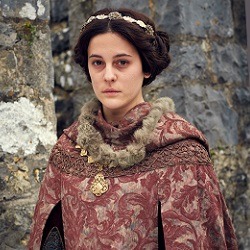
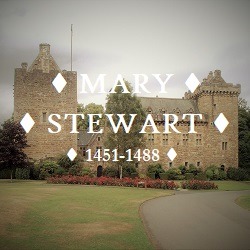
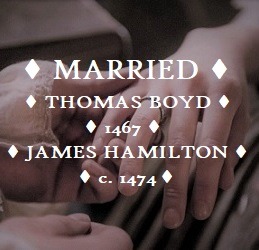
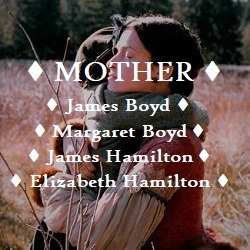

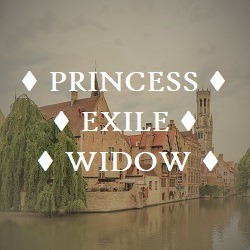
Shoddy History Edits: Mary Stewart, Countess of Arran
The oldest surviving daughter of James II of Scotland and Mary of Guelders, Mary Stewart was probably born in Stirling in July 1451*. Over the course of the next decade she would be joined by at least five siblings, four of whom lived to adulthood- the future James III (b.1452), Alexander Duke of Albany, John Earl of Mar, and Lady Margaret Stewart. Although their births secured the future of the Stewart dynasty, the early lives of these children were not exactly stable and Mary would lose both her parents by the age of thirteen. Following her father’s accidental death at Roxburgh in 1460, her mother took charge of the government of Scotland on behalf of the young James III, until her own early demise in late 1463. After this Mary’s powerful kinsman James Kennedy, Bishop of St Andrews, assumed a leading role in the kingdom’s affairs but when he died in turn in 1465, things began to get a bit out of hand. Possession of the king’s person was a valuable commodity during Scottish minorities and it wasn’t long before the favoured tactic of ‘rule by kidnap’ was employed by Robert, Lord Boyd.
In summer 1466, a group of Boyd supporters led by Robert’s brother, Alexander Boyd of Drumcoll, seized the fourteen year old James III while the king was out hunting near Linlithgow, and took control of government. A reasonable amount of nest-feathering ensued, which was not entirely unexpected. However the Boyds seem to have overstepped the mark when, on or around 26th April 1467, Lord Boyd’s eldest son Thomas was created Earl of Arran and wed the king’s older sister Mary. We don’t know what Mary herself thought about this sudden development but her brother certainly didn’t like it- James would claim in later years that he wept at the wedding, but was unable to stop it out of fear that he and his brothers would be destroyed. This bold move from the Boyds- whose chief representative was only a lord of parliament before 1467- may not have impressed the wider political community much either, especially since Mary was the eldest daughter and was probably expected to make an important match with another powerful European dynasty*. After all, several of her paternal aunts had married into princely dynasties- like the late Margaret (d.1445), who had married the dauphin of France, Isabella (d. after 1494) who married the duke of Brittany, and Eleanor (d.1480) who married the (Arch)duke of Further Austria, while three other aunts had also been involved in important, if obviously less impressive, marriage negotiations. During her mother’s negotiations with Margaret of Anjou in 1460, Mary herself had been suggested as a bride for Edward of Westminster, Prince of Wales, the son of the exiled Henry VI of England. But as fate would have it, neither of James III’s sisters were destined to marry outside the kingdom- although, like her younger brother Alexander, Mary would experience her fair share of European travel.
After three years of power, the tide began to turn for the Boyds in the summer of 1469. Robert, Lord Boyd had been busy over the past year arranging the king’s marriage to Margaret, daughter of Christian I of Denmark, and now he and his son Thomas, Earl of Arran, had the honour of escorting the royal bride back to Scotland. But in the meantime James III had finally managed to seize the reins of government, and, by the by, he had also come to the conclusion that Lord Boyd and his son weren’t really in need of their heads. This must have put something of a damper on proceedings when the Boyds’ ship docked in Leith. Later sixteenth century accounts claim that Thomas Boyd was intercepted on board by his wife Mary, who warned him of her brother’s intentions. Instead of disembarking with the rest of the fleet, the couple promptly sailed away from Scotland again, with Thomas’ father Robert joining them later in exile- a sensible precaution really since James had Robert’s brother Alexander Boyd of Drumcoll executed on the castle hill of Edinburgh a few months later, and forfeited the possessions and lives of Robert and Thomas Boyd in absentia**. Whether or not Mary played an active role in the flight of her husband and father-in-law like the sixteenth century writers claim***, we do know that she joined them in exile. Sixteenth century sources claim that the Boyds in vain sought the support of the king of France, while contemporary sources show that Mary and the Boyds took refuge in Flanders, throwing themselves on the mercy of her cousin Charles the Bold, Duke of Burgundy.
Bruges was then a fashionable place for exiled British royals to mooch around (Edward IV of England and co. were also in residence over the winter of 1470-71). Charles the Bold was not always a reliable ally but, in the Boyds’ case, he did at least send a message to James III through his ambassador Anselm Adornes (soon to become a favourite with the king of Scots), asking for the Scottish exiles to be pardoned and allowed to return home. James thanked the duke for his courtesy to his sister but stoutly refused, recounting the Boyds’ crimes and arguing that the duke, “ought no longer to favour traitors, who to the king’s dishonour had brought his sister to exile in many foreign lands.” So the Scottish exiles remained in Bruges for some time, staying at the Hotel de Jerusalem which belonged to Anselm Adornes while its owner went on pilgrimage to the real Jerusalem. During this time Mary gave birth to two children- James and Margaret Boyd- whose godmother was Margaret of York, Duchess of Burgundy.
In late 1471, though, the situation looked like it was improving. Some modern historians interpret the sources as stating that a plan was developed for the Boyds and Mary cross the sea again, and for Mary to travel to Scotland to soften her brother up while the Boyds waited in England until it was safe for them to return. On the other hand, sixteenth century writers like George Buchanan and John Leslie were of the opinion that James III had lured his sister home under false pretences, “on account of the great love she bore to her husband.” In any case, a safe conduct from Calais was granted to the exiles, and to Anselm Adornes who was to accompany them, and they sailed for England in October 1471. Thomas Boyd said goodbye to the rest of the group in the southern kingdom, and went to the court of the newly restored Edward IV, where he had business with the king. The rest of the party went on to Alnwick, where they were to remain to await the outcome of Mary’s mission (Robert, Lord Boyd, now quite old, is supposed to have died there). Mary then crossed the border with Anselm Adornes and his wife. She is not known to have seen her first husband again.
Little is certainly known of Mary’s career between her return to Scotland in 1471-2 and her second marriage in 1474, but clearly any plans to restore the Boyds to favour failed. Mary herself was receiving ferms from lands in Scotland by late 1473 at least, if not earlier, indicating that, if not exactly back in favour, she was at least able to conduct some business without royal obstruction. Both Leslie and Buchanan (and other writers) claim that she was detained by her brother in Ayrshire while James III wrangled a divorce between Mary and Thomas. The grounds and exact process of any such “divorce” are unknown, other than Buchanan’s puzzling story that the king summoned Thomas Boyd to Kilmarnock to answer for his crimes within sixty days and that, when Boyd naturally failed to appear, the marriage was declared illegitimate. Mary was then married (by force and “against her inclination” according to Buchanan) to James, Lord Hamilton, a man many years her senior but greatly favoured by the king. Once again we do not know Mary’s thoughts on this match, but it had taken place by Easter 1474, when, at the king’s command, “my Lady of Hammiltoune the Kingis sister” was given six ells of purple velvet for a kirtle. We know this was not James III’s younger sister Margaret (though she did later reside in Hamilton) since in July of the same year, Lord Hamilton surrendered several lands into the king’s hands so that they could be granted back in conjunct fee to the couple, with the wife named as “Marie Senescalli ejus sponse, sorori regis”. But aside from the minor detail that Mary’s first husband was perhaps still cutting about, there were other impediments which made the new couple’s relationship less than legal. Accordingly, in April 1476, Pope Sixtus dispensed them from the impediments of consanguinity, affinity, and public honesty, and declared the child which had since been born to them legitimate. By the time of Lord Hamilton’s death three years later, at least two children had been born of the marriage- a boy named James and a girl named Elizabeth.
In the meantime, Mary’s first husband Thomas appears to have died abroad, though we have almost no information about his life following their separation, and even the sixteenth century writers do not agree on this point. Buchanan claims that he died in Antwerp not long after the “divorce”, and was buried there with great honour on the orders of Charles the Bold (he also gives his personal opinion that James Hamilton was far inferior to Mary’s first husband- hindsight is a wonderful thing). The Italian humanist Giovanni Ferreri had obviously heard very different stories about Thomas and his character from his Scottish sources, and, in his rather unreliable continuation of Hector Boece’s history, he gave Thomas a reputation as a man capable of any vice, and claimed that, after much travelling in Europe, he was murdered in Italy by a man whose wife he had seduced. But two letters in the celebrated collection of the Pastons of Norfolk have survived which refer to Thomas Boyd’s time in England , and the first of these gives a very different character sketch to that offered by Ferreri- and a rare contemporary insight into the whole affair. On 5th June 1472, John Paston the younger wrote to his older brother of the same name:
“"Also I prey yow to recomand me in my most humbyll wyse unto the good Lordshepe of the most corteys, gentylest, wysest, kyndest, most compenabyll, freest, largeest, most bowntesous knyght, my Lord the Erle of Arran, whych hathe maryed the Kyngs sustyr of Scotland. Herto he is one the lyghtest, delyverst, best spokyn, fayrest archer; devowghtest, most perfyghte, and trewest to hys lady of all the knyghtys that ever I was aqweynted with; so wold God, my Lady lyekyd me as well as I do hys person and most knyghtly condycyons, with whom I prey yow to be aqweynted, as yow semyth best; he is lodgyd at the George in Lombard Street.**** He hath a book of my syster Annys of the Sege of Thebes; when he hath doon with it, he promysyd to delyver it yow."
We are offered no such contemporary insight into Mary’s character, which must remain something of a mystery, although if even half of what the sixteenth century writers claim about her is true, she must have had her fair share of both mettle and misfortune. Though she never saw her husband again, her two children by Thomas Boyd were eventually allowed to return to Scotland and, in the early 1480s, young James Boyd was even allowed to succeed to his grandfather’s title of Lord Boyd, possibly through his mother’s political influence. Norman MacDougall has raised the possibility that the young Boyd- then only in his early teens- returned to Scotland in 1482 in the company of his uncle Alexander, Duke of Albany, who had invaded Scotland with Richard, Duke of Gloucester and an English army. Since James III wasn’t entirely free to govern as he liked during this troubled period, MacDougall suggests that Mary Stewart may have seen her chance to rebuild the Boyd patrimony in Ayrshire. The fact that the grants of land made to James Boyd (several of which which Mary received liferent of) were part of the queen’s dower and supposedly could not be alienated meant that the grants were semi-illegal, and unlikely to have been made by the king acting on his own initiative. But James Boyd’s career was destined to be brief and when his uncle Alexander fled to Dunbar in 1483, the nephew followed and the grants made to him were rescinded. The following year, the young James (who could not have been much older than fifteen) was killed by Hugh Montgomery of Eglinton, sparking a local feud in Ayrshire between the Boyds and the Montgomeries which lasted over a century.
Mary was only in her early thirties but she had already lost two husbands and was now left to bury her teenaged son. Of her four siblings, only two remained by 1488, since John, Earl of Mar, had perished in mysterious circumstances in royal custody in 1479 and Alexander, Duke of Albany met his end in 1485, when he was hit by a splinter from the lance of the Duke of Orleans (the future King Louis XII) during a tournament in France. However, Mary did not live long enough to see the death of her last brother James III at the Battle of Sauchieburn in June 1488, since she herself seems to have died earlier that year, aged around 37.
Her posthumous legacy, as with so many other women of her time, has generally been seen in terms of the later prospects of her offspring. The descendants of her two children by Lord Hamilton were destined to play an important role in the fraught politics of sixteenth century Scotland. From her son James Hamilton were descended the Earls of Arran, including the Regent Arran who governed Scotland on behalf of the infant Mary, Queen of Scots, by virtue of his position as “second person of the realm” and the little queen’s direct heir through his descent from her great-great aunt and namesake. Mary’s younger daughter Elizabeth Hamilton married Mathew Stewart, Earl of Lennox, and Elizabeth’s grandson the 4th Earl of Lennox would later challenge the claims to the throne of his cousin the Regent Arran, creating a rivalry at the very heart of Scottish politics. Margaret Boyd, the only surviving child of Mary’s first marriage, married first Lord Forbes and then returned to Ayrshire to marry the first Earl of Cassilis. Although Mary Stewart herself remains a shadowy figure to this day, her story- both factual and speculative- has attracted interest and sympathy throughout the centuries and still offers opportunities for further discovery.
Additional notes and references below the cut.
Edit: the ‘read more’ section isn’t showing up on a lot of versions of this, so I will just have to put all the notes and sources below, even though it’s messy:
* In the twentieth century there was quite a bit of debate over the correct dates of birth for James III and Mary. Despite what is on wikipedia, this has largely been resolved and the general consensus is that Mary was the elder sibling.
** Some historians have debated whether Mary’s marriage prospects were quite so important to the political community in 1467 as has been traditionally assumed, but the Stewart dynasty’s contemporary European marriage alliances are nonetheless important to bear in mind.
*** Lord Boyd’s two younger sons were spared the king’s wrath however, and the youngest of them, Archibald Boyd of Naristoun, was the father of Marion Boyd, a mistress of James IV.
**** In all fairness though, we have so few contemporary chronicles/histories for the reign of James III that we have to take the sixteenth century writers at their word sometimes, especially where they agree with each other. Nonetheless we should always be cautious.
**** It’s worth noting that the site of the George in Lombard street in London is still occupied today, since there has been an inn on the spot since the twelfth century and its current incarnation is an eighteenth century building housing the George and Vulture restaurant. It seems that several of the buildings of Anselm Adornes’ estate where the Boyds were housed in Bruges also still exist, though I will have to do more research on this.
References (I have included links to online versions where available):
- “The Date of the Birth of James III”- there are two articles by this name in the Edinburgh Historical Review for the years 1950 and 1951 respectively, and both of them were consulted. The author of the first was Annie I. Dunlop while corrections and debate between Dunlop and Dr William Angus comprise the second.
- “James III”, by Norman MacDougall
- “Power and Propaganda: Scotland, 1306-1488″, by Katie Stevenson
- “The Boyds in Bruges”, W.H. Finlayson
- “A Letter of James III to the Duke of Burgundy”, C.A.J. Armstrong
- John Lesley’s “The Historie of Scotland”
- This translation of George Buchanan’s “History of Scotland”
- “Accounts of the Lord High Treasurer of Scotland”, vol. 1
- “The Exchequer Rolls of Scotland”, vol. 5
- “Register of the Great Seal of Scotland”, vol. 2
- “Vetera monumenta Hibernorum et Scotorum historiam illustrantia...”, Augustin Thenier
- “The Paston Letters”, vol. 3, edited by James Gairdner
- Giovanni Ferreri’s continuation to Boece I had to use the translation from this website since I couldn’t get access to the 1574 printing any other way, though my reading is backed up by secondary sources.
#This was not my best edit I may redo it later#My sources are pretty decent though so proud of that#women in history#British history#History edits#But had to get the word out about Mary- apologies for the length when I know there's not much definite info on her but context is important#Also James III and his siblings were a bonfire of insanity- Mary actually got off comparatively lightly#I don't know what was in the air in the 1470s- the York brothers were just as bad and on the continent there's a fair few similar cases#the Stewarts#shoddy history gifsets#Mary Stewart Countess of Arran
88 notes
·
View notes